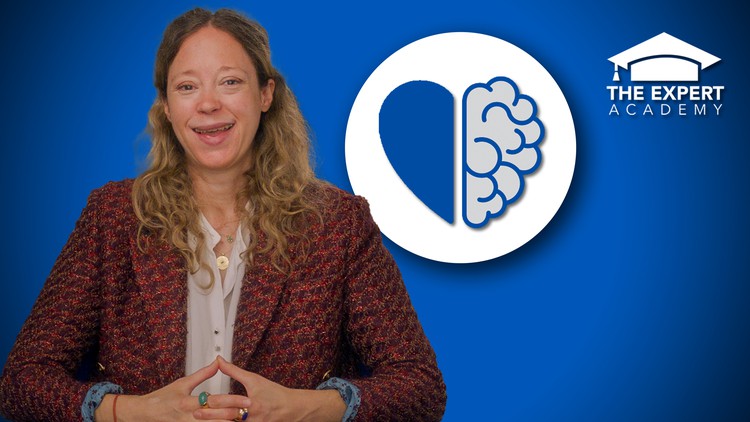About The Course
Optimise Your Response to Uncertainty, Change & Pressure is a science-based programme designed by Mindful Leadership Advisor & Transformative Coach Palma Michel, combining elements of mindfulness, neuroscience and positive psychology.
This course is for senior executives, high potentials and anyone trying to learn how to deal with and optimise their response to uncertainty, change and pressure.
In this course, you will learn how to rewire your brain and ace your inner game, in order to thrive at your outer game. It is designed to help you create new mental habits that enable you to bounce back from adversity and access even more of your potential in everyday life.
Who is Palma Michel?
Palma Michel advises organisations and individuals on successfully navigating the space of not knowing. She is a sought-after mindful leadership advisor, executive and life coach, mindfulness teacher and public speaker. Her global clients include CEOs, founders, philanthropists, start-ups, universities and multinationals. She also supports many clients who have been diagnosed with life-threatening illnesses or burnout.
Palma strongly believes in giving back and has been supporting a number of impact accelerators on a pro-bono basis. Her volunteering work with the mental health charity Mind and St Joseph’s hospice gives her a unique perspective on living life right now with purpose and meaning.
Palma’s first book ‘The Authority Guide To Mindful Leadership‘ offers simple evidence-based techniques to manage yourself and others and effect positive change during times of uncertainty. She is also supporting a variety of research projects that investigate the effects of meditation and peak states on overall wellbeing and mental health. Palma’s meditations are featured on two of the most popular meditation apps Muse and Insight Timer.
Before making her passion her profession in 2013, Palma was trained as a lawyer, had a stint in strategy consulting and spent 10 years as a board-level head-hunter for two of the top 5 global executive search firms. She has 16 years of experience in advising CEOs, boards and investors on leadership and human potential issues.
The Nature Of Our Emotional Experience
-
1Definition Of Emotional Resilience
In this lecture, Palma extends a warm welcome and provides an overview of what you will learn in the course. She shares the definition of emotional resilience and explains why it is useful. Using an example of a client who repeatedly experiences the same challenges and problems, Palma starts with tips on how to avoid bounce back from adversity and not adding additional negativity or stress to already challenging situations.
-
2How Best To Use This Course & Set Your Intention
Palma offers an overview of how the course is structured and instructions on how to use it. In order to get out as much as you put in, try to give each lecture your full attention and take time to really do the guided reflection exercises provided. Start by journaling on why you are taking this course. What would you like to get out of it? How would you like to feel by the end of it? How will your life be better if you achieve your goal? What is a significant obstacle to achieving your goal for this course and what could you commit to do to overcome this obstacle?
Download the 'Workbook' supporting document.
Manage Your Brain
-
4The Executive Brain & The Default Mode Network
Palma offers an overview of the functions of the executive brain, including focus, impulse control, strategic thinking and positive outlook. She explains the default-mode network and discusses 'self-referential' thinking, i.e. 'me', 'myself' and 'I' (such as 'what do I need?', 'how am I?' and 'where should I be?') with reference to flow states and high wellbeing.
-
5The Amygdala
Palma offers an overview of the amygdala section of the brain and its functions. She goes on to explain 'the amygdala hi-jack' of the executive brain, what happens on a physical, mental and behavioural level and what contemplative neuroscience has discovered through fMRI scans (functional magnetic resonance imaging or functional MRI). Learn what sets off the amygdala; it is not what happens to us but how we think about it and how we judge a situation.
-
6Check-in Exercise
Exercise: Notice where you notice your breathing right now in the chest (shallow or contracted) or in the abdomen. If in the chest, the likelihood that the amygdala 'is on' is high. Reflect back on your past week and journal about if/when you noticed any signs of your amygdala being on.
Recap & Summary
-
7Managing Your Brain & Nervous System
Contemporary education has largely overlooked creating a comprehensive system for managing oneself, including our nervous system and the internal world of thoughts, sensations, emotions and distractions. Palma explains that this is where mindfulness comes in. She defines what mindfulness is, introduces the formal practice of meditation - which she likens to 'a mental gym' - and shows how to bring concentration, open awareness, curiosity and a non-judgmental attitude to everything you do.
-
8Meditation
Exercise: Palma shows you how to do a meditation, by using your breath and counting.
-
9The Zone Of Genius & The Zone Of Stress
Palma explains that, at any point in the day, you will find yourself either in your 'zone of stress' or your 'zone of genius'. Being aware of where we are can shift us into the now.
-
10Exercise: Shifting Exercises
Exercise 1: Practice a breathing exercise to down-regulate the amygdala and the nervous system in order to shift your state.
Exercise 2: Mindful walking.
-
11How To Make Mindfulness A Habit
Palma explains that, when it comes to practising mindfulness, it is better to practice often and little, rather than seldom and long (a few minutes every day is better than one hour on a Sunday). She offers tips for how you can get started.


